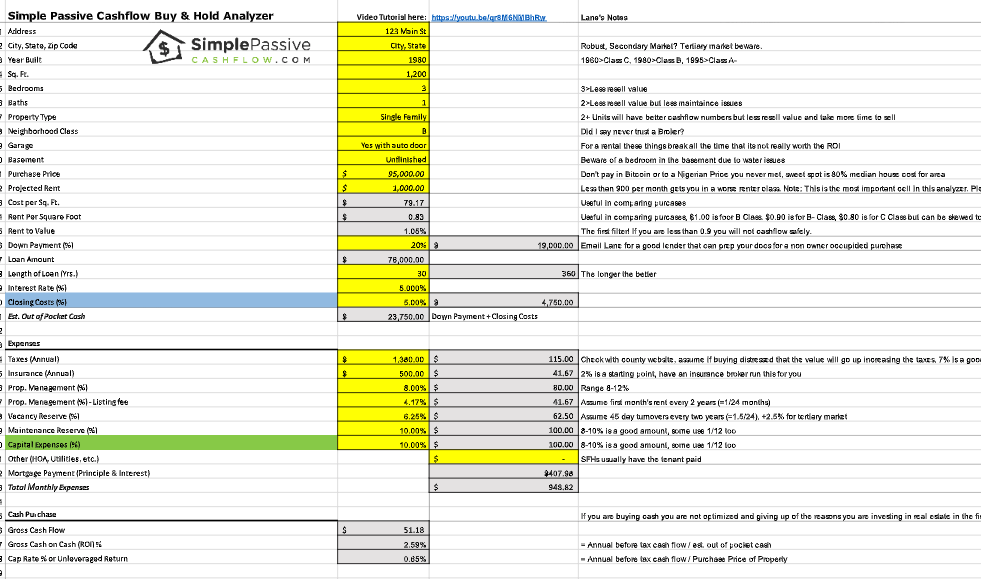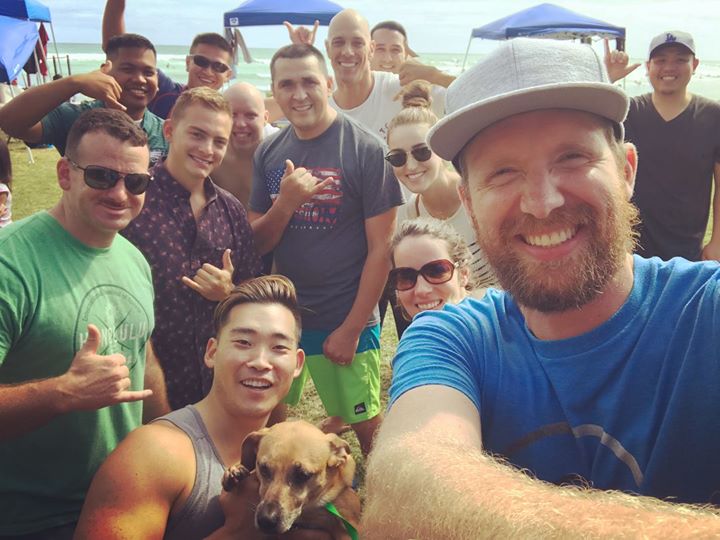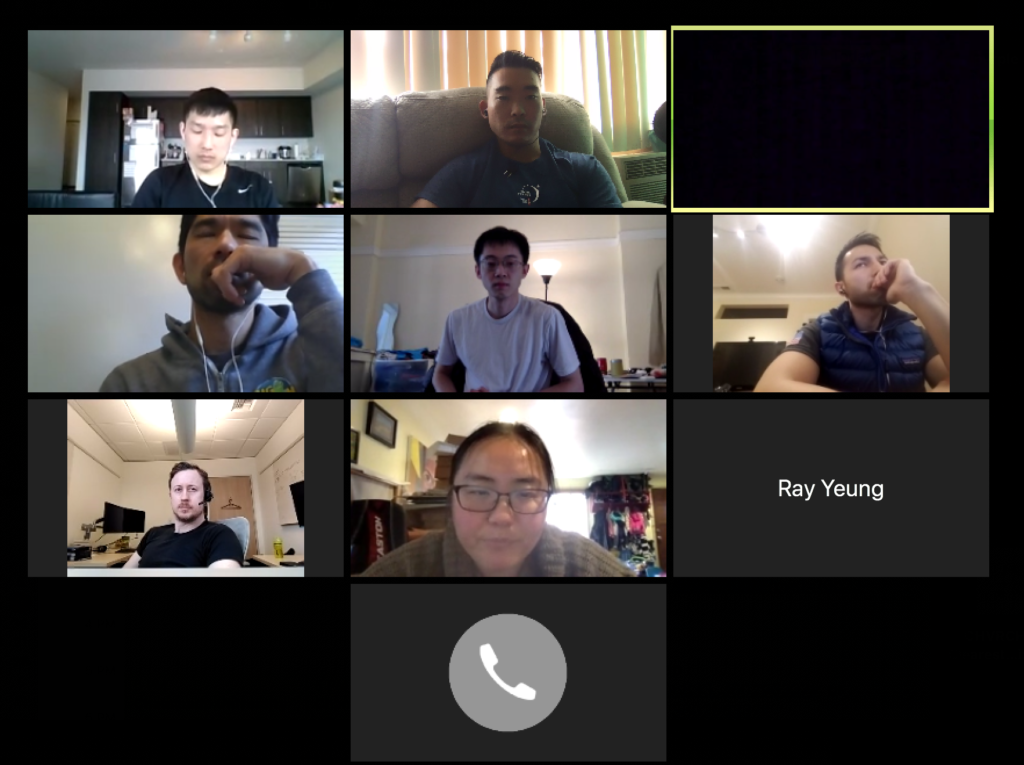Stories from my SFH portfolio… Show notes below:
One of my longest tenants went AWOL. 🙁
“They did send in a partial payment of $965 that we received on Monday.. They now owe for January and $385 past due. for a total of $1,263 I am not sure why they are being so uncooperative for the inspection”
A couple weeks later…
“She has been in the hospital again. I gave her our direct number and she said she will call. She is also supposed to bring the late part and will bringing last months rent in about a week and half. She apologized for the trouble of getting her, but she was not able to return calls.”
I like to work through and with my property management.
They alerted me of the issue.
“Seems like valid reason for being late. Maybe we can ask for hospital invoice or doctor note just for record keeping. We might submit to the potential seller to explain the gap in the rent rolls. That way we can verify it too. “
Rats!
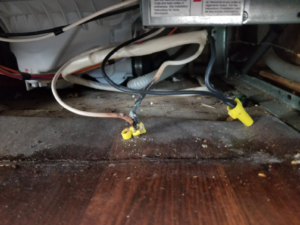
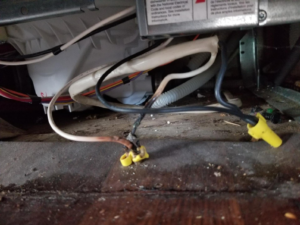
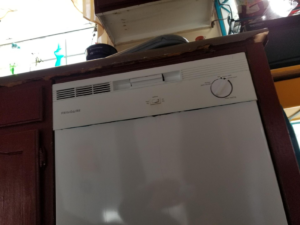
The dishwasher stopped working in this home. It looks like it needs a new sprayer arm and wire harness for $285.89. But the bigger picture is there are rodents in the home that chewed the wires. See pictures.
We will need the approval to repair the dishwasher but first, we will also need to get a quote for rodent removal. The quotes for rodent removal are free so I will send someone out to see how extensive the rodent issue is. I will keep you updated and we will go from there.
Our tech went to this property and reported the following:
dishwasher model# gz8945pg35 wire harness was chewed by rodents also spray arm has burn spots estimate for repair $285.89
Sign up for the Hui Deal Pipeline Club to get access to a Sears pricing list to see how my you are getting screwed for by your property management.
Our tech made a temporary fix to wires so dishwasher is working now. We also recommend to do something about rodents otherwise they may cause more issue….
But hey just got my AHP and private lending not monthly payment J
Mold in one of my properties
Buying a drone-
For the past few years I have been amazed the amazing drone shots.
J Martin posted some shots in Changmai, Thailand and I started to ask him which one he used. Basically there are two of them that everyone gets one that is mobile and in 1080p (300) the other which is larger and in 4K (1000).
I’ve been adding videos to our YouTube channel and think that the 4K is where the future is. I’m making the leap to get the 1000 dollar version. I also am going to consider it a business purchase so I can get a nice entrepreneur discount too. Sometimes I think in amazement how crazy that would be to buy such a toy for a miser like myself. But then I figure I would take cool shots for our investor club when I do due diligence. How cool would it be to take shot of drilling rigs for exploratory drilling? Yup we are going there.
A couple of years ago when we were working our first project in Iowa which we ultimately dropped we did some video and it really brought the project to life.
As a side note, I had shinny object syndrome kick in and thought I would be able to make videos for other companies. Imagine I could go to a CrossFit and record their outdoor workout or go to a wedding (and get free food).
Then I thought that I could get a dime a dozen (commodity employee) or Millennial good with computers to do the tedious editing for me.
But then I stopped myself. But the whole mental exercise brought insight about what I want to ultimately hit my Simple Passive Cashflow number when you work on things for joy and engagement. What better to help people share awesome visuals and be around people on their special day like a wedding or birthday party.
So I heard Uncle Buck Joffrey started intermittent fasting a few months ago and lost 40 lbs. I started doing IF when I started renting out my first home in 2010. I can remember reading the ebook “eat stop eat”.
Ralph Waldo Emerson
“The first wealth is health.”
I needed to step my game up so I decided to find a personal trainer. So stay tuned for that. After spending 60k in 2016 and 30k in 2017 on training and mentorship I truly see the value of it. Of course, as you know I am someone who takes action. I can also say being on the other end mentoring you guys in my paid coaching program that it’s neat seeing the barriers broken. Honestly, I don’t feel like I do much but the results are amazing. As an ex crossfit coach myself, if you would asked me if paying someone 90 dollars to count my reps and pass me the weights… I would have thought you were crazy. But now I get it!
Wanted to share a trend that I have been seeing in the past 6 months in MFH (idk how it manifests in sfh?)
The class c assets are getting beat down by cap rate compression (delta between cap rate and interest rates) and therefore a lot of the experienced investors are getting into class b because the per cost unit is getting pretty much the same. This is moving away from the normal business plan for turning class c to b. The thought is… heck might as well go for the 1980s build instead of 1960-1970s stuff for the same price. Having a newer asset might also be a little more conservative way to go with this stage in the market cycles because in a correction A will move to B… And B will move to C and the lower class D/C in the tertiary areas will see most of the vacancy or rent concessions.
Hurricanes:
I got to pondering looking back when New Orleans was hit by Hurricane Katrina there were short-term disruptions to gas prices especially since Houston is a major think tank for the metro industry. I expect Federal money which might have been focused on (helicopter money) be spent on infrastructure spending or tax cuts NOW be redirected to damage recovery.. Which will manifest as tax breaks, loan subsidies, or other incentives offered to entice investment capital to flow into affected markets.
Definitely an opportunity in the short term to go in there and develop to take advantage of the fiscally earmarked casually funds.
As a long-term buy hold investor what I am keying in on is what the big institutional players (like insurance companies) will do. I suspect they will actually have to pony up and pay claims in Houston and Florida which will divert funding away from their Plan A: financing new class A multi-family apartments in other markets. This results in less new developments coming online which is great for Class B and C mfh investors who have been struggling with the recent cap rate compression.
Other random thoughts:
- Low / no equity homeowners will walk from their properties and focus on rebuilding their lives as renters for the next 2 years. These foreclosures will certainly impact values in numerous communities throughout Houston.2. Many insurance companies will re-think the coastal markets and their policy premiums for same. This, along with the inevitable increase in flood insurance premiums will also impact buying power for future homeowners.3. Landlords will be in demanding higher rents as there will be a shortage of housing for the next year or while properties are rebuilt.4. Long-term impact can only be speculated on since this was an epic storm that caused billions in damage to homes, autos and businesses but those purchasing SFR’s better buy very, very low or they could be the next distressed sellers.
Changes in MFH Underwriting and getting deals
I’ve had some hurdles here. It seems the standards in submitting LOI’s have been changing the past 9 months. What changes have you been seeing from the front line?
1/ Business conditions are dictating POF with the LOI. Based on the latest sophisticated investors are underwriting deals with 80/20 terms, 1% interest only and 1.25 DSCR.
It’s becoming more common for brokers to review the buyers’ underwriting before accepting an LOI to present to the sellers. The brokers view these terms as aggressive and are reluctant to submit my LOI. It matters who your lender because it comes down to team and a portion of it is your lender. Large deals have been falling out of escrow due to over-aggressive underwriting that cannot find financing. Las Vegas lenders are underwriting at 65/35 LTV, 1.3 DSCR. You can change your underwriting to match Las Vegas standards, giving brokers more comfort, and therefore remain on the ‘A’ list or do nothing.
A lot of time you will needs POF with the LOI. Use an angel… anyone who is an ‘Angel’ on the LOI, will be given the option to KP and co-sponsor ( if qualified ) the deal if the LOI is accepted. The average $/unit for a C-class, value-add, stabilized asset in a C to B- area is $55-85K. The POF for a 200 unit property at the top end is $5.95M.
2/ Post close liquidity equal to 10% of the loan.
3/ Proof of net worth equal to the value of the property.
4/ Hard money; the standard is becoming 1% of the purchase price (I haven’t submitted an LOI with hard money yet; .5% hard money and see if that places me in best and final).
Question: I heard you say in the podcast that you have a team in Atlanta. How did you go about building a team there? Is there a podcast episode on that?
I think it’s no secret that as the sellers market matures, turnkey properties not in war-zones are becoming endangered species. When I began picking these things up in 2013 you could get inside the loop highway (under an hour commute to the city center) and get a 1980-1990s product. Now you are looking outside of the loop highway and in 1940-1960 properties. The good turnkey providers are frankly making more money selling to retail buyers than us cheapo investors who has got a million questions. The stuff I see coming out on most lists are properties that you would not want to buy. Unless you have someone boots on the group (who is not trying to sell you) and is agnostic to the transaction, you are going in blind to a loaded minefield.
I am beginning to leverage my contacts and finding investor focused real estate agents who know what to look for in a rental property. This effectively cuts out the middleman in the transaction but it requires you to know what you are doing in the first place (two to four transactions or a mentor) so you can coach your agent and arrange for contractors. You find one person who is good you find the others because good people associate with good people.
I feel like the SimplePassiveCashflow Facebook group has reached a tipping point where everything you need from a peer investor network is here. You just have to go about it the right way. One wrong way I see it done and I see it done in other groups and BiggerPockets is being an “ask-hole”. Asking a one off question and not contributing to the community is a sure way to get crickets and a one off answer. But you miss the point, which is to build a relationship. Put your perspective goggles on and think… how can I add value to someone or others? What do they need?
So my call to action is if you want to team up with me and help me source properties and teams let me know. The rest please stand by for PML deals and others on the Hui Deal Pipeline club.
We need to stick together and work collectively. As a Hui. I know what happens when you read a few websites and podcasts and go it Rambo style because I did it myself when I first got started. You will get eaten by the sharks and you won’t know what got taken from you. You leave so much money on the table that you don’t realize a couple years down the road.
I don’t want to discourage anyone from not buying because at the end of the day even with the prices as they are it’s still better than the equity markets. I currently believe that there is a 50% chance we will see a recession in the next three years so keep investing just as long as the numbers make sense. If you don’t know the numbers or think you know get someone to help.
Where do you think the crossover point is?
I am talked to over a couple hundred people over the past year and for those people SAVING less than 30K per year after their day job should invest in rentals or turnkey rentals in a market like kansas city, memphis, atlanta, birmingham, not seattle, san francisco, california…
The short term goal is to gain landlord/acquisition knowledge and build a cashflow base of a couple thousand every month. But once you achieve that you should step up to larger passive partnerships/syndications because the return to pain in the butt ratio is greater. People who call/email/write on forums fail to see this two phase journey. People hear the benefits of MFH and come up with the ridiculous 1000 unit goal when they have not even see if they are borrowing material on their first buy and hold. Eventually, a lot of people quite a fizzle out while starting out on the MFH road when they should have done sfh and this insight.
As much as I advocate for “simple” I am really an advocate for the minimal effective dose to maximize returns with minimal effort.
So I’m trying to learn how to evaluate syndications as a passive investor. I was looking to a deal that was presented to me near your last one and I ran a quick analysis. What do you think?
CONS:
– 1990s build A class than B/C Class @ 120k per door and value-add reposition is from B/C to A, risky at this market cycle in event of a recession and rent contraction (Usually we are buying at 45-65K a door with a stabilized building that have over 90% occupancy)
– Loan is 80.25% LTV -> too high? – (This is not really a factor – you want to be borrowing as much as you can and this is why you are going with such syndication to buy in bulk with others and get better terms. When looking at the loan you need to look at the term such as loan length, if it is recourse or non-recourse, and pre-payment terms)
– Loan is 36 months -> dangerous in this cycle (5 years and less is dangerous, just closed on a property in OKC for 10 year 4.22% 3 year interest only)
PROS:
– Sponsors experienced – how did you verify this? (Talking to investors who were in past deals. Relying on my network to discuss reputation and character. Note: This is not going to be completed by emails or phone calls.)
– Investor waterfall favourable – (Waterfalls create complexity and typically they mean less returns for the passives. Generally, the best terms for investors is a simple 80/20 or 70/30 split. Waterfalls raise a red flag for me. I have seen people balk from a high sponsor fee but that is just one thing, if it’s a deal then the sponsor should be able to take what they want. A deal is something that is underwritten very conservatively – see below)
Based on my limited and growing knowledge, I wouldn’t invest in this deal if I had the funds. What do you think?
(You are scratching the surface of these: A true analysis of the deal requires you to have income and loss statements and rent rolls going back 12 months and possibly 36 months. This is where analysis totally differs from SFH or units under a dozen. Another part is to analyze the rental comps because 90% of the projections are based on the proforma rents per square footage. A lot of smoke and mirrors can be used by leads and brokers to inflate this number. Comps need to be verified and it is really a touchy feely thing. It cannot be a feeling on hey this 1985 property looks like this 1987 property on the westside of the train tracks looks like I can get $1.12/Rent per SF. Warning…I have see a lot of garbage underwriting play with annual rent increases 2.5%+ a year, expenses increase less than inflation – under 2% annual increases, and total rent increases of over 18% – this is something Patrickherbig.com has really opened my eyes too. Past performance is not an indicator of success and 2012-2016 anyone could have made money if you were in the right place.)
I saw the last deal you did was at a 70/30 as opposed to 80/20, which is what I understand to be the generally accepted industry standard for syndications. How do you think about evaluating deals with respect to the profit split, both from the investor and the sponsor perspective? I’m trying to understand the situations where a “below market” upside would be acceptable and how the sponsors decide what structure to use – is it just based on supply/demand and the reputation of the deal sponsors (ie the sponsors/GPs will make the deal as favorable to them vs the LPs as possible while still being able to attract investors)?
I see a lot of yahoos doing 70/30 splits with silly assumptions like 1% expenses increases and expectations of over 20% bump in rents. I also see a lot of 80/20 and 90/10 deals that are run by folks with long and short track records. Beware of a person with a nice suit. I think I need to personally show up better because of people never the less associate a shinny pdf deck and cool bio page as reliability or perceived value. I would not really look at the GP/LP splits. The way I see it if it’s a great deal then we as LPs should have a large room for error and heck yea the GP should be taking a large cut. But things get muddled by the assumptions the GP is using and quite frankly unless you have analyzed 100-200 large MFH properties and put in a few LOIs I don’t think you will be able to see where the red flags are. There is a YouTube video “Bear and basketball awareness test” https://www.youtube.com/watch?v=Ahg6qcgoay4 where you get fixated on this split stuff and forget the fundamentals of the deal.
Thoughts on mobile home parks/ self-storage?
I recognize as both still being in the real estate category as a good way to diversify away from Real Estate in a heated market. I admit I don’t know much about the two, especially self-storage. From what I have gathered from other investors the Cashflow in Mobile homes is a little higher but there is not as explosive upside as apartments. This upside is really never captured in a conservative proforma anyway. Mobile home parks are a not being made and in times of correction, they are going to be in very high demand.
I have been looking at some mobile home parks and talking to a bunch of you if you are more interested in either a single asset higher risk/reward mobile home park or a more diversified play of multiple parks in one.


